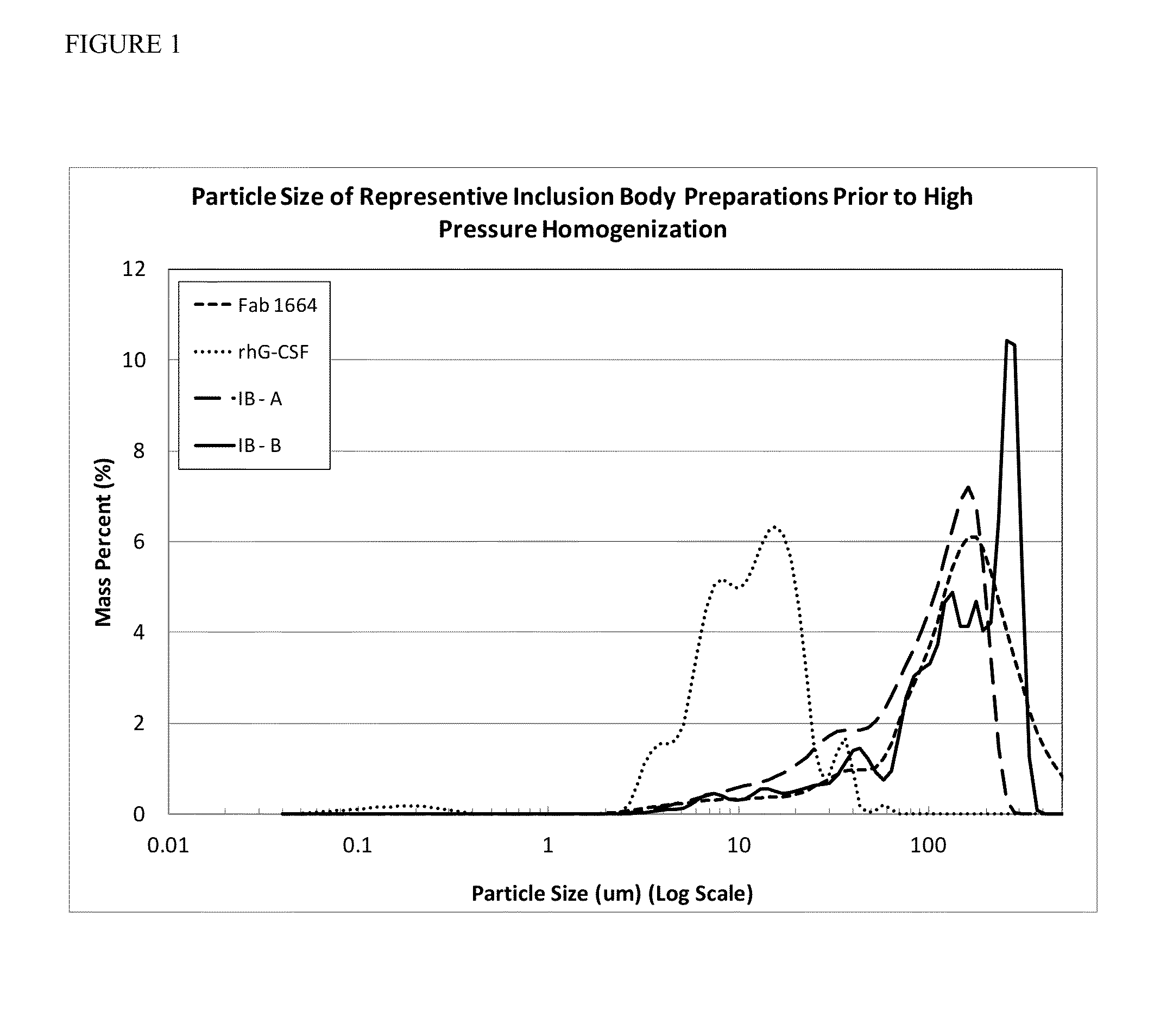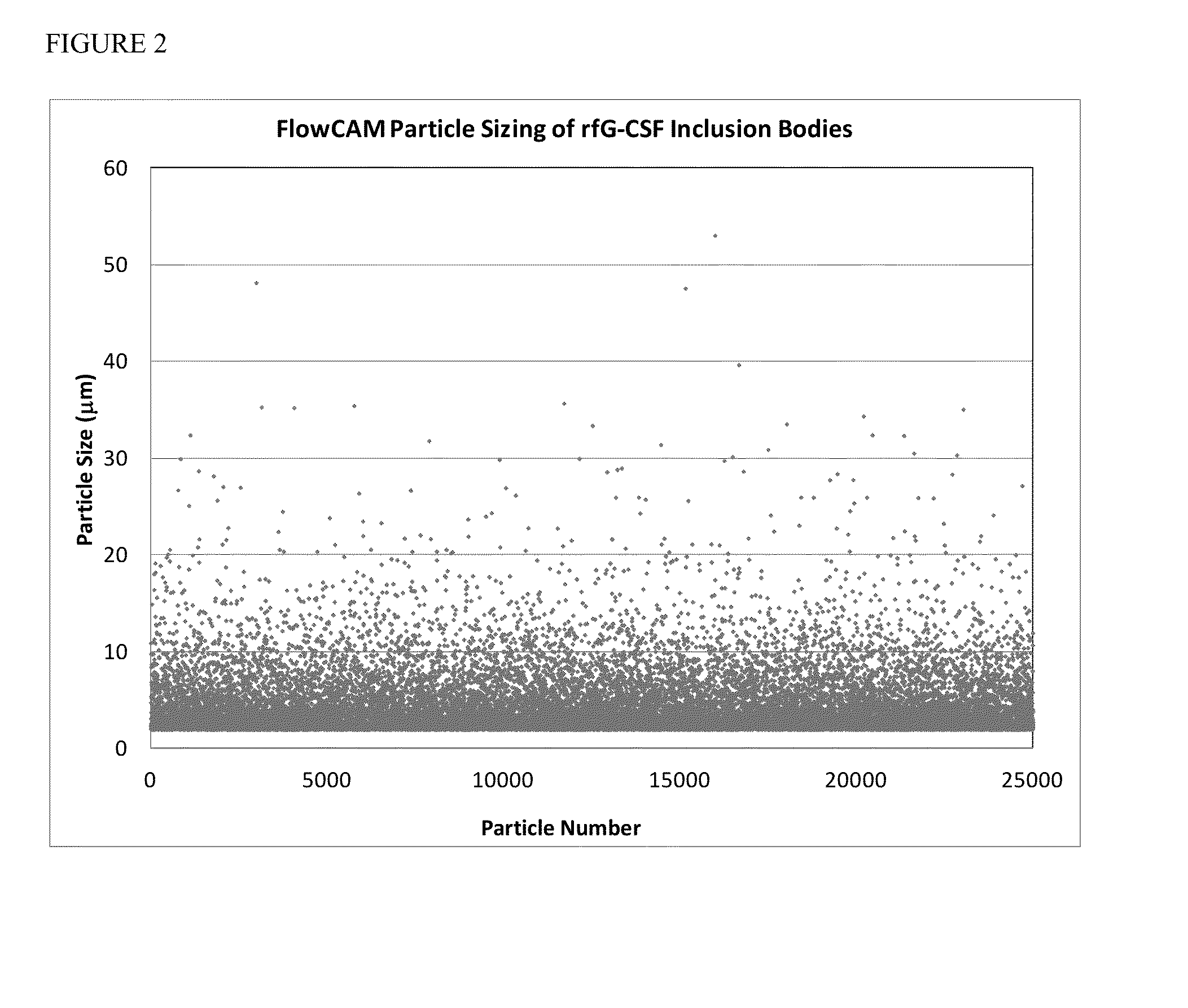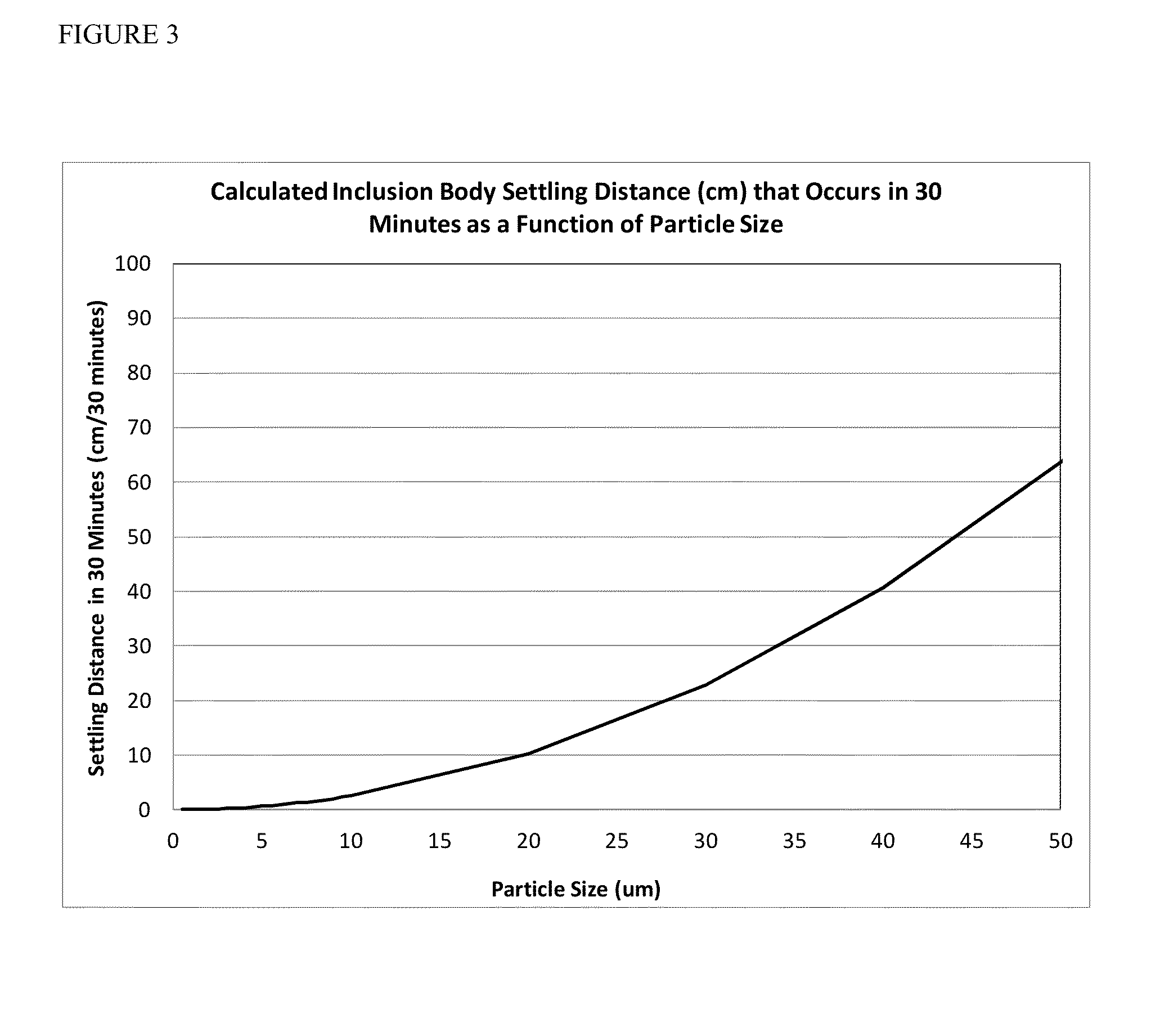Methods and systems for protein refolding
a protein and protein technology, applied in the field of high pressure disaggregation and refolding of recombinant proteins, can solve the problems of reducing or unacceptable yield of refolded proteins from inclusion bodies
- Summary
- Abstract
- Description
- Claims
- Application Information
AI Technical Summary
Benefits of technology
Problems solved by technology
Method used
Image
Examples
example 2
Inclusion Body Size Characterization
[0078]Inclusion body particle size for each of the four IB protein preparations was measured using the LS230 Coulter Particle Counter manufactured by Beckman. The instrument was washed with 0.22 μm filtered water and background subtracted. Inclusion body suspensions were vortexed and particles were transferred to the detector using a transfer pipet until the particles counts were between 35-60% PID at a pump velocity ranging from 50-70% to prevent settling. For the analysis no sonication was conducted on the sample chamber. The model used for calculating particle size distributions used a solution refractive index of 1.33 (for water) and a sample refractive index of 1.5 (for protein). For each run, three ninety second averaged particle size distributions were taken for each of the four IB protein preparations to quantify the particle distribution between 0.4-2000 μm with the mean obtained across the three samples and presented as a 95% confidence ...
example 3
Settling Rates of Inclusion Body Preparations
[0081]The settling of a Stokes particle in a non-moving fluid is completely characterized by the Stokes equation (de Nevers 1970): where V is the velocity of the particle, D is the diameter of the particle, g the gravitation constant, ρpart the density of the particle, and ρfluid the density of the fluid. Studies by Middleburg demonstrated that density of an inclusion body is 1.26 g / ml (Thomas, Middelberg et al. 1990). Using 1 g / ml as the density of water and assuming a settling time of thirty minutes, the distance travelled by a particle as a function of its diameter is shown in FIG. 5. The Stokes equation demonstrates that particles of 5 μm in diameter settle 0.6 cm over a thirty minute period, a sufficient distance to generate a protein concentration gradient during a refold reaction. The settling distances for Fab 1664, rhG-CSF, Inclusion Body A and Inclusion Body B sample protein preparations without additional treatment according to...
example 4
Preparation of Stable Protein Preparations or Dispersions of Inclusion Body Preparations According to the Present Invention
[0082]The inclusion body protein preparations shown in Example 2 (Fab 1664, rhG-CSF, Inclusion Body B, and Inclusion Body A) were reprocessed according to the present invention by additional high shear mechanical processing as high shear homogenization, as a non-limiting example, using a NIRO Panda Processor (1st stage only) at a backpressure of 1000 bar. Each IB protein preparation sample that had been treated according to the present invention to provide stable protein preparations or dispersions was collected and then stored at 25° C. for no greater than five hours and retested (for showing unexpected and / or improved size distribution over non treated IB preparations) using the identical method as described in Example 3. The size distribution after high shear mechanical processing according to the invention is shown in FIG. 6. Unexpectedly and in sharp contra...
PUM
| Property | Measurement | Unit |
|---|---|---|
| volume | aaaaa | aaaaa |
| volume | aaaaa | aaaaa |
| volume | aaaaa | aaaaa |
Abstract
Description
Claims
Application Information
 Login to View More
Login to View More - R&D
- Intellectual Property
- Life Sciences
- Materials
- Tech Scout
- Unparalleled Data Quality
- Higher Quality Content
- 60% Fewer Hallucinations
Browse by: Latest US Patents, China's latest patents, Technical Efficacy Thesaurus, Application Domain, Technology Topic, Popular Technical Reports.
© 2025 PatSnap. All rights reserved.Legal|Privacy policy|Modern Slavery Act Transparency Statement|Sitemap|About US| Contact US: help@patsnap.com



